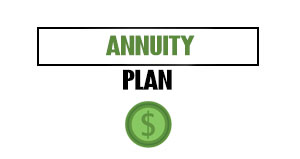You want freedom when you launch a business—freedom from 9-to-5, bosses, and salary ceilings. The irony, however, is that many entrepreneurs struggle with something they never imagined was challenging — paying themselves.
Unlike salaried jobs, where your paycheck could arrive every two weeks, entrepreneurship blurs the line between personal and business finances. Often, you’re riding the uneven waves of revenue. What’s more, there’s no telling when expenses will pile up. Within a few months, you’re living off savings or credit cards while pouring everything back into your business.
Here’s the thing, though. Paying yourself isn’t selfish; it’s a matter of survival. Moreover, it is a signal that your business model works and that your company can sustain not only its growth but also its employees. Here, we’ll explain how entrepreneurs can pay themselves for their hard work while maintaining a healthy business.
Table of Contents
ToggleWhy Paying Yourself Matters
Some entrepreneurs delay paying themselves, thinking they’d wait “until the business is bigger.” The problem? Often, that day never comes. Unless you build your pay into the model’s early stages, it’s easy to normalize free work.
Therefore, here are a few reasons why you need to pay yourself;
- Sustainability. When your personal finances are in shambles, you can’t grow a business.
- Motivation. Your hard work is validated by a paycheck, which keeps you motivated emotionally.
- Boundaries. By paying yourself, you keep your personal and business finances separate, keeping them in better shape.
- Credibility. Lenders and investors want to know that the business supports its owners. The reason? It proves viability.
In other words, if you can’t pay your employees, your business may not be a business at all. Instead, it might just be a hobby with some overhead.
Step 1: Keep Business and Personal Finances Separate
Before you decide how to pay yourself, you need a clear line between business and personal money. That means setting up a system that prevents funds from mixing.
Open a dedicated business bank account.
The first step to separating your personal and business finances is to establish a business bank account. Additionally, it streamlines tax preparation, simplifies bookkeeping, and helps protect your personal assets.
Here’s how to do it;
Choose the right bank and account type.
Start by comparing options that meet your business needs. Fees, transaction limits, digital tools, and accessibility should all be considered.
- National banks (like Chase or U.S. Bank) offer widespread branch access but higher fees.
- Regional or community banks provide more personalized service and lower fees.
- Online-only banks or fintechs (like Relay) offer digital-first tools that are usually free or low-cost.
Gather the required documents.
Most banks require a mix of business and personal information, depending on your business structure.
- Employer Identification Number (EIN). This is your federal tax ID number. Although an EIN is highly recommended for sole proprietors, they can use their Social Security Number. On the IRS website, you can apply for free.
- Personal identification. Owners and authorized signers must have a government-issued photo identification, such as a driver’s license or passport.
- Business license or DBA certificate. If your business operates under a different name, this is required.
- Business and personal details. The legal name of the business, the address, and contact information, as well as the Social Security Number of each owner.
Establish good banking habits.
As soon as your account is open, develop habits to keep your finances in order:
- Connect accounting software. Using tools like QuickBooks, Wave, or Xero, you can automatically track income and expenses.
- Maintain a cash buffer in your business account. In this way, you can use this to cover slow months or unexpected expenses.
- Automate tax and payroll transfers. As a result, you’re never scrambling to save money.
- Pay personal expenses only from your personal account. You should never dip directly into the business’s funds.
This separation allows you to see what your business earns, what it spends, and what is truly available for your paycheck. By skipping this step, you’re essentially leaving yourself to guess, and guessing is almost always a financial disaster.
Step 2: Understand Your Business Structure
Your legal business structure determines how you pay yourself. So let’s simplify;
- Sole Proprietorships & Partnerships. Taking an owner’s draw is like transferring money from your business account to your personal account. Your personal return is used to pay your taxes.
- LLCs. This is similar to a sole proprietorship unless you elect to be taxed as an S-Corp. You can then pay yourself a salary plus distributions.
- S-Corps. Owners must pay themselves a “reasonable salary” (subject to payroll taxes) and can also take dividends (not subject to payroll taxes).
- C-Corps. In addition to taking a salary, owners are treated like employees. Also, taxes on dividends are separate.
It’s essential to choose the proper tax structure. S-Corps, for example, tend to have lower self-employment taxes if correctly set up. The sooner you speak with an accountant, the fewer headaches you will have later on.
Step 3: Decide How Much to Pay Yourself
Entrepreneurs often get stuck here. Too much, and your business will starve. Too little, and you will starve yourself. As such, there’s a sweet spot in balancing the two.
Thankfully, there are a few ways to save money from your salary;
Fixed salary method.
Pay yourself consistently, just like you would an employee. If your business has stable revenue, this works well. The result is a more predictable financial situation.
Percentage of profits method.
Set a percentage (say, 30%) of profits each month or quarter. As the business grows, so does your pay. When revenue dips, so does your paycheck. As a result, your income is directly linked to your performance.
Hybrid approach.
During strong months, add bonuses or profit distributions to your modest base salary. By doing so, stability and flexibility are balanced.
Step 4: Factor in Taxes
It doesn’t matter that you are “just starting out.” Taxes cannot be avoided. So, make sure you plan ahead:
- Make sure you set aside 25-30% of your income for federal and state taxes.
- Avoid penalties by paying quarterly estimated taxes.
- Be prepared for taxes by keeping a separate savings account.
There’s nothing like an unaffordable April tax bill to ruin the thrill of paying yourself.
Step 5: Reinvest in the Business (Without Skipping Your Paycheck)
Entrepreneurs often fall into the trap of reinvesting everything back into their businesses. There’s no doubt that growth is important, but so is balance. For entrepreneurs, the 50/30/20 rule is a smart framework.
Using this budgeting guideline, entrepreneurs can determine how to allocate their net income. Specifically, applying the personal finance rule to business helps balance core operational costs, reinvest in growth, and achieve long-term financial stability.
- 50% of profits are reinvested in the business, including marketing, staff, and tools.
- 30% of profits are used to pay yourself.
- 20% of profits are put into savings or debt reduction.
Always make sure you carve out a percentage for yourself after you’ve adjusted the ratios to suit your business.
Lifestyle Example: The Travel Entrepreneur
Let’s say you own a small marketing firm. As your company grows, you dream of traveling with your family four times a year. Well, let’s crunch some numbers.
- After expenses, your business nets $120,000.
- As a base salary (through payroll), you pay yourself $45,000.
- Each quarter, you receive $15,000 in profit distributions.
- For taxes and reinvestment, you set aside $30,000 each.
Using this structure, you can fund your lifestyle, cover Uncle Sam, and leave fuel in the tank for future growth — all without feeling like you are “stealing” from your business.
Common Mistakes Entrepreneurs Make When Paying Themselves
- Not paying themselves at all. As a result, burnout and financial stress occur.
- Paying themselves too much too soon. Before the business stabilizes, it drains working capital.
- Mixing accounts. When paying personal bills with a business card, you may be in trouble with the IRS and the law.
- Ignoring taxes. It’s possible to be hit hard by underpayment penalties.
- Failing to adjust. If the company has $50K revenue, what worked for $50K won’t work for $500K.
By avoiding these traps, the process will run more smoothly.
Tips for Paying Yourself with Confidence
- Automate payments. Regularly transfer funds to yourself so that you don’t have to worry about payments.
- Review quarterly. If necessary, adjust your pay based on business performance.
- Use benchmarks. To set realistic pay goals, research the salaries of similar entrepreneurs in your field via sites like BLS or Payscale. You can also purchase a single report or a subscription from HR consulting firms like Mercer and Willis Towers Watson if you can afford it.
- Plan for lean months. Keep a cash buffer so you can maintain pay even when revenue dips.
- Think long-term. Your future self can also be paid from a retirement account, such as a SEP IRA or Solo 401(k).
The purpose of paying yourself isn’t just for now, but for financial security down the road.
Final Thoughts
The goal of entrepreneurship is to build freedom, not to create a new cage of financial stress. Investing in yourself isn’t an afterthought; it’s the key to sustainability.
By establishing a clear method, whether salary, draw, or a hybrid, you transform your business into a true livelihood. As a result, you gain peace of mind, your family gains stability, and your business gains credibility.
Keep in mind that you didn’t start a business to be broke. Invest in yourself in a way that makes sense for your current lifestyle and future growth. The real measure of success is not revenue, but whether the business supports the life you want.
Image Credit: Tima Miroshnichenko; Pexels

















